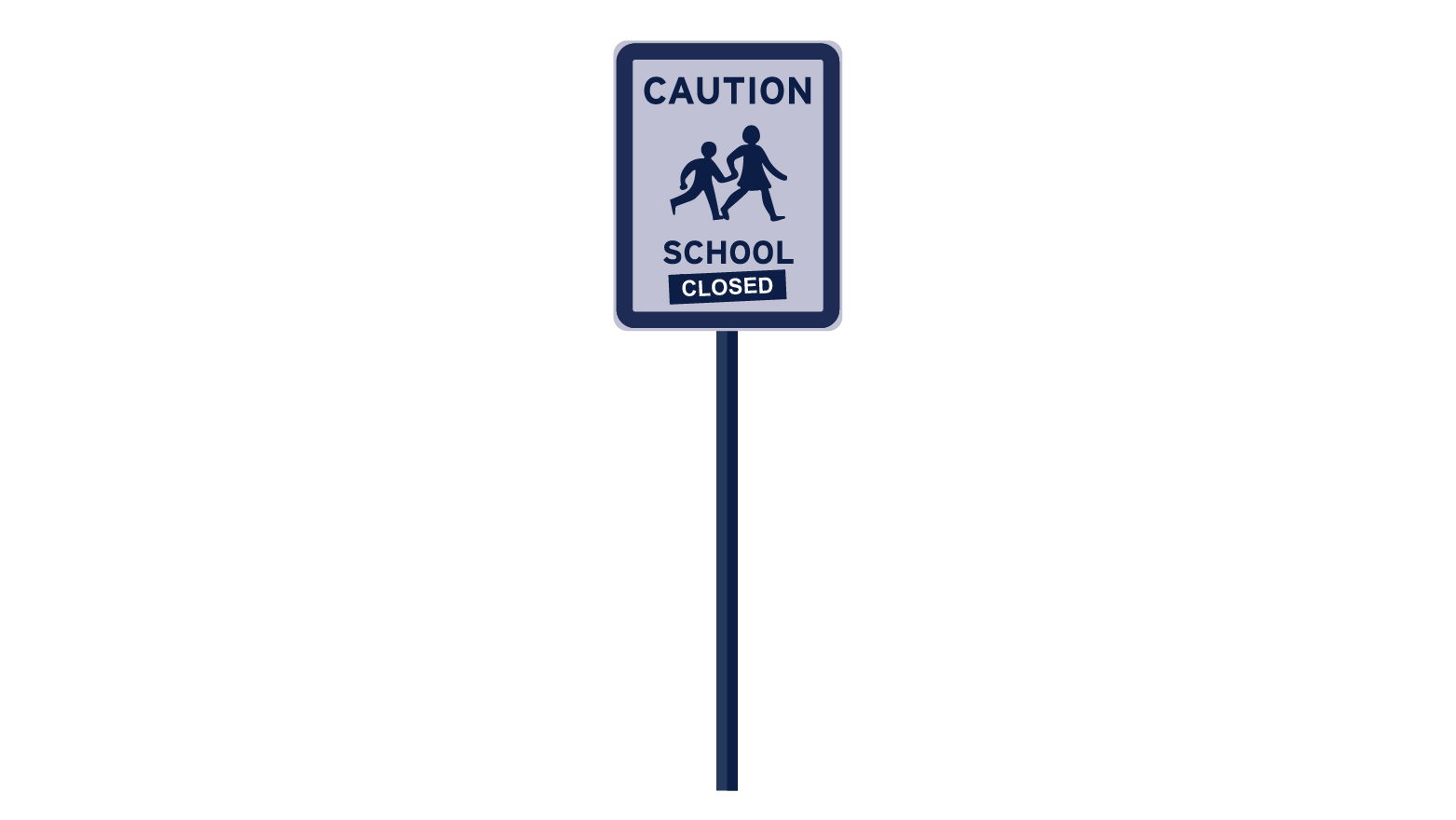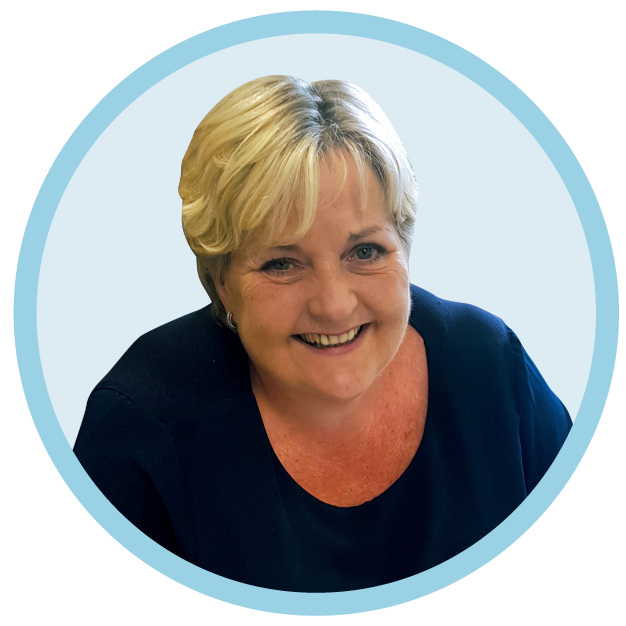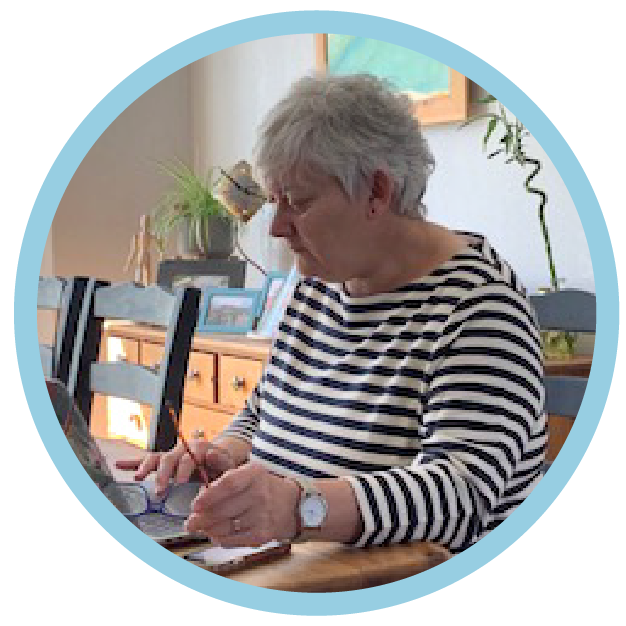Covid-19:
school leaders on the frontline
“After schools shut their gates on Friday afternoon, they will remain closed.”

Leadership Focus journalist Nic Paton speaks to
school leaders about their experiences of dealing with covid-19.
With those 12 words to Parliament on Wednesday 18 March 2020, education secretary Gavin Williamson set in motion the unprecedented shutdown of our nation’s education system to help stem the spread of the coronavirus (covid-19).
In the process – as few of us need reminding – he plunged school leaders up and down the country into a frenzy of emergency contingency preparation and planning. This included, in barely 48 hours, putting in place the infrastructure to provide on-site skeleton ‘childcare’ education for the children of essential ‘key workers’, implementing from scratch home-learning provision for millions, putting in place remote support, pastoral and welfare structures for staff and students alike, and being thrust into the uncharted territory of becoming something of a fourth emergency service (after the NHS, police and social services) for many of the most vulnerable within their local communities.
“You wouldn’t wish this sort of situation on anyone just to prove how good our profession is. But I do think what this pandemic has done is demonstrate the sheer quality, commitment and dedication of everyone working in teaching and schools, and that includes all the support functions as well of course,” says NAHT general secretary Paul Whiteman of that unparalleled fortnight in March when the education world changed out of all recognition.
“The government had to move quickly; I don’t criticise them for doing that. The result was a very well-known system – what is expected of you, the rhythm of the academic calendar and year – being thrown into utter confusion. But the quality of teachers and leaders in responding to that has really, really shown through – there is no doubt about that; it has been a phenomenal effort,” he adds.
For many (if not most) head teachers, the sudden, juddering halt to ‘normality’ in March – from the cancellation of exams through to the wiping out of a good portion of the school year – was a period of such vivid intensity and challenge that it will stay with them for the rest of their lives. Indeed, when NAHT put out the call for members’ stories for this article, it was inundated with 150 replies, many of them long and, seemingly, somewhat cathartic.
The eight individual stories* we tell here are, therefore, just a snapshot of the immense difficulties our members in England, Wales and Northern Ireland all faced in the run-up to and during the lockdown; in primary, secondary and special schools, and in schools large and small.
Members also make clear that NAHT’s practical reassurance, advice and support during this crisis have been important and appreciated. As NAHT policy director James Bowen explains, it has at times needed to be a careful balancing act.
“We very quickly started putting guidance and advice up for members on our website, in the form of FAQs and guidance pieces; we started doing that before the announcement to close schools. But one of the considerations we’ve constantly had has been the need to get useful advice out to members quickly but balanced against the need for it to be accurate,” he says.
“There is no training or preparation for this; no one trains you how to respond to a global pandemic. All of us have been learning as we go along, and I think we will have to be kind to ourselves. We will all have made some mistakes, but we have to accept we all did the very best we could in unbelievably trying circumstances,” James adds.
Belfast head teacher Katrina Moore may have insisted modestly that she is “not doing anything special or different than anybody else would do”. But in truth, the stories she and others tell us here show how school leaders and their teams have risen and responded to these unprecedented times and gone above and beyond.
But they also illustrate the deep worries that many school leaders are feeling as the conversation and focus turn to what happens next; what schooling will look and feel like come September. Within this, there is the question of whether our current high-stakes accountability system will also need to adjust to the ‘new normal’.
As Paul puts it, “schools will, undoubtedly, be working in a different way. So, we need to hold them to account in a different way. Whether the inspection framework we have right now is suitable for when we return, I very much doubt. Whether we should still be talking about schools as being ‘outstanding’, ‘good’ or ‘requires improvement’ is also questionable. I think these terms will have little value in the immediate future.
“I’m not for a moment suggesting there shouldn’t be a role for an independent inspectorate; there will still need to be outside verification that things are being discharged properly. But I think we may need to reset the measure of expectation and, certainly, the use of single-word descriptors. It is not expecting less. It is how do we measure things in a different way because we will have to do things differently? I think there is a huge debate that we need to have about that.
“Our teachers and school leaders are phenomenal. The effort of our members not only to continue education but also support the communities in which they work has been extremely moving; not a surprise to me, to be honest, but very moving. And I think that stands the profession in good stead.
“But I also think there is an opportunity out of all of this to reset the ambition about education and understand just how good the educators in this country are. Let’s paint a more progressive vision for education following this pandemic than perhaps the one we had going into it.”










ALLISON COLLIS IS HEAD TEACHER OF CHARLESTOWN COMMUNITY PRIMARY SCHOOL IN BLACKLEY, NORTH MANCHESTER, WHICH HAS 420 PUPILS PLUS A 52-PLACE NURSERY AND APPROXIMATELY 60 STAFF.
“On the Wednesday of that week – the day of the announcement – we were in regular consultation with Manchester City Council because our numbers were dropping daily. We had 22 staff off and only half the children in school.
“At about 2.50pm, I got an email from a parent about her four-year-old being confirmed with symptoms and very poorly in intensive care in North Manchester General Hospital. So, we spoke to the council and agreed to close that day.
“Having had the email at 2.50pm, we closed at 3.15pm. No goodbye to our year six pupils – we just had to make sure all the children took their belongings as quickly as possible. In hindsight, we should have sent paper and pencils home, but by that point, we were living one day at a time and rewriting action plans hourly as it was. It was quite possibly one of the most stressful 25 minutes of my career trying to close a school with children and staff in it without alerting anyone and creating hysteria.
“We then had two days to sort out our key worker provision and put people into teams to staff it safely. Having to wait on the definition of key workers until the Friday afternoon, however, was not okay; it significantly hindered our progress and organisation. I went shopping at the weekend to buy craft materials, as we had exhausted all our art resources on World Book Day.
“I even got myself into a challenging situation in the local B+M store, being accused of taking all the stock when other mums needed it for home learning. Once I explained that I was a head teacher, the mood changed – but only slightly. I filled my car with paper, paint and gardening equipment hastily!
“I only came to the school as head teacher in January, and so it is a new team for me. We’ve done a lot of work in my first nine weeks on building self-esteem and self-confidence because they are an amazing team. An added challenge is that I am working with a senior leadership team (SLT) where we are still very much in our ‘forming’ phase – we’ve done a lot of learning over the last few months on how to work together efficiently and effectively and find out how each other works under pressure.
“People’s working patterns have been completely out, too. I did a 12-hour day yesterday, and I didn’t realise until I was writing emails and saw it was 7.30pm. A lot of our teachers are homeschooling their children while still providing online learning for their classes, so that can be hard for them. I try to keep the workload down while meeting the needs of our children and the catchment we serve.
“The other day, I rang a member of staff who was having a really bad mental health day. I then got an email from another asking if I was available to talk because they were also having a bad day. I was exhausted from juggling everything and trying to support other people, and I suddenly thought ‘where do I go?’ Fortunately, I have a very supportive heads group on WhatsApp. They’re amazing and restore my balance when needed.
“Free school meals have been a real challenge. On the Thursday and Friday of that first week when we closed, we still had all the food in the kitchens. So, we bagged up lots of potatoes, other vegetables and fruit and just said to families ‘come and get them’. We were handing them out over a little hatch with gloves on. It was surreal.
“The council offered a grant for parents to apply for – but, unfortunately, the link did not work for a few days, so we continued to receive complaints, concerns and demands. Therefore, we had to make sandwiches while investigating vouchers and signposting our parents to food banks, grants and temporary loans if needed. Then the national system came out, but it is still a headache. I am swamped with daily emails from parents about not receiving vouchers, asking how to process vouchers, receiving invalid vouchers, children not receiving vouchers, children not being eligible for vouchers and questioning why nursery and reception children do not qualify. It has been relentless.
“Last week, we did a whole-school call, then emails – this is on top of our regular calls to vulnerable children. And for those who haven’t responded, we did a knock at the house and stood back two metres. Some of them we struggled to get to because they live in high-rise flats.
“It can be quite stressful because you will be on head teachers’ forums and people will be saying ‘I’ve got 100% learning engagement, and all my children login at 8.30am’. I met one of our families yesterday; I knocked on their door and discovered they have one phone between them all – three children and that is their only access to the internet. In addition to this, they had a relative pass away.
“They were crying on the doorstep. I am the new head teacher, so they do not know me that well. I felt helpless. They had received paperwork from the solicitors about the death and couldn’t understand it because their English was poor. They didn’t have a printer and couldn’t understand what the emails were saying. I’ve asked them to send it all to me so that I can explain it, print it off and take it round to their house. We’re doing jobs that are clearly not our usual. It’s not a problem at all; I want to help. But people are struggling out there, and it is really sad.
“It was 2pm, and I was waking people up – that’s the routine some of our families have now. Some children aren’t doing any learning at all; they haven’t been out of their pyjamas for weeks. I am trying, but I feel powerless to engage them from a distance.
“These children have missed half a year’s schooling. My early years children are not ready for year one. My year one pupils are nowhere near ready for year two SATs. Some of our year six pupils are not ready for secondary school, and we would normally put a lot of extra transition support in place. We are considering a delayed move to the next school year. So, classes will move at half-term or even January, and our new nursery cohort will not start until then either.
“Supporting children and teachers with bereavement, PSHE and getting their routine back, those are going to be massive issues. And we’re getting accompanying reports from the police about the domestic violence that is also happening. My new curriculum plan reflects all this and how teachers should support children.
“We are going to have to reassess because children won’t be at the expected levels they should be for starting the new school year. Getting back to routines, expectations, how to learn, dealing with emotional trauma and so on will need to be our priorities.
“I will be due an Ofsted inspection next year, and I am concerned. By the time September comes, we will have a huge amount of repair work to do before we can even turn our attention to learning, which means the disadvantaged gap is widening daily.”

KATRINA MOORE IS PRINCIPAL AT MALONE INTEGRATED COLLEGE, BELFAST, A SECONDARY SCHOOL WITH 600 PUPILS.
“I was only appointed the week before in what is my first role as a full-time permanent principal. So, my claim to fame is that within a week of being appointed, I had cancelled the school’s skiing trip and then closed the entire school.
"There was a severe lack of support from our local education partners here in Northern Ireland; a lot of it was us making it up as we went along. You just had to say ‘if I was in that position, if that was my child, if that was my member of staff, or if that was my husband, my wife or my son; what would I do?’.
“The week it all kicked off and lockdown was announced, I brought staff into school. We did a socially distanced meeting in the assembly hall. There were staff sitting there in tears not knowing what was happening, frightened for themselves, scared for their families, concerned about their health and health issues, and anxious about what was going to be expected of them.
“I was trying to placate and reassure staff as well as the parents and the kids: ‘we will get through this together’, ‘it will be fine’ and ‘it will just be a different way of doing things’. But at the same time, I am standing there and thinking ‘is everybody in this room going to be here when we meet again?’.
“We’d recently had a new sports hall built, which only opened at the end of November. It is immaculate and state of the art. So, we opened it up to NHS workers from Musgrave Park Hospital. Mostly it is used for showering and changing before and after shift.
“But doing that meant we had to close the rest of the building, and I then had the dilemma about what to do with our key worker children – we’d had just two requests – who needed supervision. So, I phoned a colleague, also an NAHT member, in another school near us, Hunterhouse College, and they had no kids in at all.
“After a few days of toing and froing to sort out insurance and indemnities, access and safeguarding, and then to put a process together, I was able to go back to those parents and say ‘we have got cover; bring your kids’. They come up to the school with me every day, and I look after them.
“Hunterhouse College was so good. They just handed me their keys and said ‘go for it’. This pandemic has brought out the good in so many people; it is unbelievable. I am also so proud of the staff, the kids, their parents and everybody else connected to my school. But I am not doing anything special or different than anybody else would do.
“We have 70% free school meals and 30% English as an additional language compared with about 2.4% for Northern Ireland as a whole. Because of our social deprivation issues, a lot of our parents are struggling with homeschooling. Weekly contact has also been necessary with a lot of our special educational needs (SEN) students and families as well as those students who we would have pastoral concerns over.
“There are lots of ‘what ifs?’ [about returning in September]. For example, I need to appoint four new members of staff because the population of the school has been growing and will grow for September. But I can’t do that at the minute.
“When you have so many staff who are vulnerable – and quite a lot of our staff have to self-isolate because of their health reasons – and you have classes of 26, 27, 28 kids in the junior school, it is not so bad. But I can’t see schools being back full-time, all singing, all dancing from September; I really can’t. And that is concerning.”

KATE LASBURY-CARTER IS CHIEF EXECUTIVE OF THE TEACH MULTI-ACADEMY TRUST IN POOLE, DORSET, WHICH COVERS FOUR PRIMARY SCHOOLS AND A PRIMARY ITT INSTITUTION AND HAS 1,500 CHILDREN AND 250 STAFF.
“For us, the challenge before we closed was that our numbers of pupils were massively dwindling day on day, and so we had issues to do with how you code those pupils and whether it was allowed or whether it was authorised or unauthorised.
“We had someone in a local gym about half a mile away who had had a confirmed case. At the time, confirmed cases were still relatively low. We were contending with lots of parents at the gates saying their child had got it or someone else had got it, so there were lots of calming phone calls.
“We had already started to crystal-gaze a bit; we were cancelling our performances, shows and things the children had been rehearsing. We stopped all our assemblies. In the background, we started pre-empting by looking at what Scotland and other countries had done.
“We thought ‘this is definitely coming’, so we started to prepare work packs for children. By the time the announcement came on that Wednesday, I already had about 200 children off across my four schools. Staff then spent the next two days driving around the community to drop off paper-based work packs because although we had some online resources, we were certainly not at the place we are now for online curriculum provision. The appreciation from the parents was quite overwhelming. I think they were quite taken aback by the above-and-beyond nature of what the staff had put in.
“Probably the most challenging bit before we closed was dealing with our year six and year two pupils because they were just not ready to go; we were dealing with a lot of very, very upset children.
“Apart from the SATs tests, the year six pupils hadn’t had their residential, they hadn’t had their leavers’ events, they hadn’t done their yearbooks and all those things they were expecting to do. It was upsetting for the staff as well because we had some who were retiring or leaving. There was a lot of heightened emotion and genuine fear among staff and the parents. Trying to keep it normal for the children while the staff were scared for themselves and their families was also hard.
“From the moment I stood in the hall and said to the staff ‘we’re closing; this is going to happen’, the staff have repeatedly reduced myself and each other to tears. I’ve had staff saying ‘I’ve finished my self-isolation. I’m fine now, so can I come back?’ or ‘I’m high-risk, but I can do other things’. I’ve had staff who have turned up in their cars in the evening and said ‘let me deliver this or let me drop off that’.
“Even the staff who are in school on a rota, at the end of each week, they’ve been making TikTok videos and sending them out to all the people at home; people at home have been taking photos of themselves working and putting them on PowerPoints. The whole demeanour and support for each other and the children has been amazing. They just can’t do enough. In all my 22 years of working in education, I have never known a time where I have been able to stand in front of all of them and be so ultimately proud. It has been quite humbling, and I think it has changed every single one of us.
“Going back into it [in September], I do feel the government needs to give school leaders very clear guidance about who is expected to return and who isn’t. I would say probably half of our self-isolating staff have things like asthma and pre-existing heart conditions. But that doesn’t necessarily mean they’ve got a high-risk letter. So, where does that leave me? Am I telling them they must come in, which I don’t want to have to do?
“For me, too, if the rationale is to get the academic side of it back on track, then we have got to get year 10 and year 12 back as soon as possible and safely. If it’s about supporting a transition, then I would say we need an opportunity for year six pupils to come back before the end of term and maybe year two pupils too, and certainly some work around early years. But if the objective for opening schools is ‘we need to release these adults so that they can get back into the workplace’, then I think they need to be inviting in families of children rather than set year groups.
“One of our biggest, biggest things is the pastoral and mental health work that is going to have to go into just getting the children back into routines again. My domestic abuse alerts have gone through the roof in the last few weeks; they are just sky-high. We know already, too, some of our children will have lost people. And even if they haven’t lost people through death, they are suffering lots of losses in terms of their friends and having their school cut short.
“One of the things we are already talking about, which I also hope we will get the government’s guidance on, is that we are going to need to go backwards again on our curriculum. But I am wondering how that is going to reflect on Ofsted inspections, and how that is going to reflect in attainment measures.
“I will be very interested to see whether the government changes the goalposts.
"As educators, we don’t want the goalposts changed, and we don’t want standards lowered or the expectations lowered."But even if you’re saying we’ll put in booster classes and work on catch-up and everything else, as it is for our disadvantaged children, the catch-up is already very, very difficult. If you add to that a term of absence from school, then I can’t see how realistically they can expect the same outcomes, unless there is some way of getting more than 24 hours in a day.”







LOUISE JONES IS HEAD TEACHER OF MAES Y MORFA PRIMARY SCHOOL IN LLANELLI, SOUTH WALES, WHICH HAS 216 PUPILS.
“That week, when we were told on the Wednesday that we would close on the Friday, was made worse because we had a residential trip for our year six pupils booked for the following week. But at that point, the residential environments were still open. Some parents wanted the children to go, and the facility was saying it would take the children if their parents dropped them off, but others, of course, were reluctant. So, it was challenging.
“I also had staff who were concerned about themselves and their family members. I had staff asking me what they should do because they did not want to be in school if there was any possibility they could contract anything. During that last week, we made the decision that we would change how we ran lunchtimes and stop all assemblies – anything where there were more than a class of children together at one time. So, we staggered breaks and lunchtimes, and the children ate in the classrooms.
“It was a strategic operation; we had to make sure nobody was crossing in the corridors. We stopped any whole-school activity. We stopped after-school clubs. And when the children were leaving at the end of the day, we sent them out in small groups so that they weren’t converging together. At that time, we did not have a great deal of information from the authority because the authority did not have it either.
"We were going with our gut instinct as to what we should do, but trying to make sure that we were making the best choices for the children and staff.“I think the staff came together well. Everybody was conscious of doing the right thing. At that point, leadership (more than at any time) had to be really strong; I felt a real responsibility because it felt like I needed to have all the answers, which of course, I didn’t have.
“We have two well-being members of staff contacting vulnerable families very regularly, a couple of times a week if need be. We have class teachers contacting families once a fortnight, touching base or supporting with educational concerns. We also have the Welsh ‘Hwb’, which is the online platform where children can access work set by staff and email individual staff members. We have staff manning our Facebook page and administrative email address 24 hours a day.
“We have dropped off food packages in support of our local food hubs. We have distributed paper and pens to parents, and we are looking at digital support, including loaning out equipment. We put regular messages up asking children to upload pictures on the Facebook page or to post photos of themselves reading or doing competitions and quizzes. Our school’s song to keep motivation up is ‘Eye of the Tiger’, so staff have done little video compilations of parts of the song. This has been well received by all families. It is just about trying to put things on there each week that are fun, interesting and what the children want to do, not just saying ‘there is a provision out there’.
“What we’re also finding is we have to get the parents’ motivation up as well as the kids' because the parents are hitting rock bottom with their anxiety. The parents think they’re not good enough because they haven’t got the educational capacity and they’re worried about it. So, it is about us trying to get their motivation levels up and helping them to feel better about themselves. I feel we have a great responsibility – and I know my team do as well – to keep everybody’s spirits up; it is not just educational provision we’re providing but also social provision.
“One issue for us in Wales is that for months we have been working towards the launch, from September, of a new curriculum based around investigative learning. We’ve done so much work and preparation, and so much trying to change the ethos and pedagogy within the classroom. But I just feel we may have to start some of these processes again.”

JAMES FIELD IS HEAD TEACHER AT ST RICHARD’S CATHOLIC PRIMARY SCHOOL IN CHICHESTER, WEST SUSSEX, WHICH HAS 315 PUPILS.
“I only started at St Richard’s in September, although I have been a head teacher for four years, and those two weeks of March were by far the most stressful period of the pandemic. I think partly it was the unknown; it was not knowing whether we would be closing fully.
"And it just seemed to change almost every day or almost every hour.“We had a lot of anxiety from the children and staff, and a lot of children were going home with symptoms or had people in their family self-isolating. We had a lot of members of staff off because they were vulnerable. We made the call before the government did to send people who were vulnerable home. A lot of what we were doing was based on the best advice from wherever we could get it, not always directly from the government. And NAHT has been fantastic the whole time.
“Again, looking back, we made the decision very early on to do the absolute minimum and keep the children apart as much as possible. We cancelled clubs, assemblies and all that; I am pleased I made that decision in hindsight. We were very short-staffed. I was teaching pretty much the whole time; all members of staff who were part-time were in school. We met in the hall at the end of school each day and just said ‘who is in tomorrow, and how can we cover it?’.
“It was very sad for year six pupils because we didn't know if they were going to come back. I put a video up on our Facebook page for the school just saying we will all be back together at some point, even if you have to come back in September. We will make sure we say those goodbyes. We will have a big party and do something to say goodbye properly. So, that made them feel better, and I know a lot of parents have needed that reassurance.
“As a Catholic school, our assemblies and collective worship are particularly important. The first week we were in lockdown, I filmed the assembly and streamed it (through a secure group on Facebook) to parents at home so that their children could watch it. We also emailed it home to parents who couldn’t use Facebook.
“We give out certificates as we normally would, often for the children who are at home. So, we have certificates for children who have been kind or helpful to their parents at home and are making lockdown a bit easier. We’ve also prayed together. It has kept that collective sense, especially with churches being closed. We’ve sung together, too. I think the parents have needed that as much as the children.
“We’ve aimed for about one-to-two hours of set tasks each day. But we’ve emphasised to parents that we understand they won’t be able to get everything done every day. We’ve also given them suggested activities to do and things they can do through our website.
“I do worry about social distancing [from September] because children do naturally congregate and need to be close to each other. We had just five key worker children in school last week, and I was worried about some of them getting nits, let alone the virus.
“I do worry if the government expects us to maintain strict social distancing, it might harm the children emotionally because they need that connection and reassurance sometimes. So many children run up to their teacher every day and cuddle them. How is the child going to feel if we tell them ‘you can’t do that anymore’? I think we need to think about the emotional and mental impact it will have on children.
“As is always the case, it is the poorest in society who are most affected. If you didn’t have a laptop or printer, or your mum or dad were struggling, then you are going to be struggling in this period more than anyone. That is going to be a huge concern for all schools.”

JENNY LANGLEY IS PRINCIPAL OF GREAT ACADEMY IN ASHTON, MANCHESTER, A SECONDARY SCHOOL WITH AROUND 1,300 STUDENTS.
“By the end of the Tuesday of that week, we were down to about 70% attendance because a lot of families were not sending children into school. Equally, it became obvious we were going to struggle with staffing because we did have members of staff isolating.
“By the time we got to the middle of that week, we had trimmed a couple of the year groups and kept the younger students in – the year seven and year eight pupils – because we were already starting to think about parents who were working. And we had year 11 pupils in, of course, because at that point we still thought they would be doing exams in some form.
“By the Wednesday night, we’d had the news that year 11 pupils would not be sitting their exams. We did an assembly for them on the Thursday morning, and attendance was more than 90%; they were anxious, but they had wanted to work for their exams.
“They are a particularly important year group for us because our school has been through a special measures process and we are ‘requires improvement’ now. This group is an incredibly able, involved, community-driven year group. So, it was devastating for them to be told they weren’t going to sit those exams.
“We managed to cobble together a leavers’ assembly for the Friday morning, so they had that rite of passage. Our head of year 11 did a tremendous job creating a gorgeous year assembly in 24 hours with all the photographs you would normally have, music, etc.; there was food also, and they got to take their pictures. It was a lovely leavers’ assembly. That in itself was humbling. Truthfully, at that moment, they knew they were leaving, and they wanted to say goodbye to each other and the teachers – and that was quite a powerful thing in terms of what a school is for.
"And by the end of the Tuesday after, it was just the caretaker and me leaving.
“I can’t begin to tell you how proud I am of my staff; they have done tremendously well. This school has had a difficult history. Three years ago, we descended into special measures and then came out of that last year. All the way through, the thing for the staff always has been the idea that people’s perception of them is that they’re no good, which of course, I don’t think has ever been the case.
“We were coming through it, and now this has hit them. I thought the staff were going to take it quite hard, especially now they aren’t going to get the fruits of their labours this year (we were anticipating a huge lift in terms of results), but there has not been a murmur of complaint. The staff have done exactly what has been asked of them, and they’ve worked so hard to do the best they can for the children.
“I am in school every day; I do breakfast for the children on site. And then we have various free school meal packages and home visits that we do. It is a very, very community-driven role at the moment, and perhaps, that is what the role of the head teacher should be?
“This whole period has been a huge exercise in balance. There are some students for whom working from home will suit them. They will enjoy a quieter environment, and we try to supply appropriate work to keep them moving, as close as we possibly can, at the pace that we would want.
“And then there is a huge number of students for whom this couldn’t be a worse scenario, and the attainment gap is just going to get bigger. Being in school is hard for some of them as it is, and that’s with teachers in front of them. And then not to have that feedback or subject passion from their teachers that they can hook into – these are very difficult things to replicate in the current situation. So, trying to supply appropriate work for those students that is accessible and not going to damage them is a real challenge. I worry enormously about the position we have put parents in, too.
“Regarding going back in September, there are a number of concerns that I think we all have. Key among them is that my best tool for giving the children the best educational experience they can have is a productive, happy, well-organised, well-engaged staff team who aren’t worried. I’ve done a survey, and staff members’ concerns are about what is a safe exit from lockdown, what will social distancing look like and how appropriate is it to create a situation in schools like it is in supermarkets; ‘is that frightening for young children? And is that frightening for children with additional needs?’ Even the PPE debate – we want everyone to be safe, but if we are all suited and masked up, and it looks like a hospital, does that create a different environment?
“I want the children to be able to come back to school as soon as possible because I think this is incredibly damaging for some of them. But I also want the staff to feel safe in coming back to deliver that, otherwise it is a self-defeating purpose.”

SARA JORDAN IS HEAD TEACHER OF BROOK GREEN CENTRE FOR LEARNING, A SPECIAL SCHOOL IN PLYMOUTH WITH 99 STUDENTS, ALL WITH COGNITION AND LEARNING NEEDS AS WELL AS SOCIAL, EMOTIONAL AND MENTAL HEALTH NEEDS, AND A STAFF TEAM OF 50.
“We have never closed. When we had the announcement from the government that vulnerable children and children with EHCPs (education, health and care plans) still needed to attend, that was our challenge because that is all 99 of our students. I don’t think the government considered special schools originally.
“On that Friday after the announcement, we had 55 children in and 25 members of staff. I did what every other head did: we wrote to parents and sent out guidance. That Monday, we had 15 children turn up and 10 staff confirmed as shielding or self-isolating. Some parents hadn’t understood that, in reality, it was safer for them to stay at home, and that was our message. So, we did calls to parents – we said to one young man ‘anyone at home today?’, and he said ‘oh yes. Mum and dad are decorating.’
“On the next day, we were down to seven children. We rotated staff to get us to the Easter holidays, at which point, we asked for volunteers. We had a 96% response, including support, administrative and teaching staff – I have the most amazing team; they are brilliant.
“We are lucky in our building layout because our classrooms are downstairs, and we can shut off key stage areas, giving us the ability to isolate groups. Some students are coming in for full days' ‘Educare’, some for half days', some for one day on and one day off, and drop-ins where parents are struggling at home, but the children and their families are anxious, and they don’t want to come in as a group.
“We have seen a rise in students’ anxiety levels, evidenced both in behaviour at school and reported by parents/carers. This has manifested in behaviours such as, at the most extreme, running away from school and standing in front of a bus before being ‘talked down’ by school staff and brought back safely to school; absconding from home repeatedly to come to school because they could not cope with the behaviour of other siblings and repeatedly attacking family members at home.
“I did a doorstep visit the other week to a young man who only sleeps for two hours at night, and so mum is exhausted. But he is also highly anxious and doesn’t want to come out because he is convinced he only has to breathe the air outside and he’ll catch coronavirus. For a lot of our young people, that is the level of anxiety, and they find it difficult to manage. This, in turn, is impacting on the mental health of families who are increasingly asking for our support.
“One of our issues for September is that, as we are an 11-16 school, we have 20 students leaving us this summer who have had no closure. They’ve had no prom or leavers’ assembly. They have to have virtual interviews with the local college; we’re trying to sort out bespoke packages for some of the young people who cannot cope with going into a large college environment, and we have to manage that too. I worry about them.
"We need to think about them and think for September because they won’t have had any of the transitional support that we would normally have given them to move on.“We’ve trained our students so that, as soon as they come in from their transport, they wash their hands and use hand sanitiser regularly. We’ve instilled that in them, but we can do that with a small group. We’re, of course, practising social distancing, and our students have been amazing at understanding it and are now good at it. Like in shops, we’ve got two-metre lines taped in the main corridor as you come in. Visual reminders are key to understanding this.
“At times, we’re wearing gloves, and they accept that, but we’re not wearing masks. We have some students who want to wear masks when they come back because they have seen people wearing them on TV and, therefore, they are ‘safe’. So those are the sorts of areas we are going to have to be looking at.
“Transport will be another issue when the government’s guidance changes. More than 90% of our students are transported in by the local authority, but to ensure social distancing, it has had to restrict the number of adults and students who can go on transport. So, what happens when the numbers go back up? They are not walking to school; that is the complexity of it for us. It is how do we work together to reduce the anxiety of the young people coming on to transport, and their parents, and the logistics of it.
“The correspondence I have had from NAHT coming through has been fantastic; it has reassured me because I feel we have got a voice out there and our concerns are getting to the Department for Education.
“We’ve got a lot of challenges ahead of us, and I think the way schools have risen to those challenges has been unprecedented. But the government needs to be clear that it understands all the different settings we have. We need to be clear, too, about what the expectations are – what the government is expecting from us. But then balancing that against parental expectations and maintaining a safe environment for all our school community and for our young people where we can manage their learning and their social, emotional, mental health and well-being needs.”





SIMON KIDWELL IS HEAD OF HARTFORD MANOR PRIMARY SCHOOL AND NURSERY IN HARTFORD, CHESHIRE, WHICH HAS 420 PUPILS.
“We had worked on numbers of around 30 [children of key worker places] being available out of 420, which was manageable and fine. But then, when the government released the list of the criteria just before midnight on the Thursday, we realised that there were going to be far more children eligible; we were looking at about 130, so it was a real challenge. I was up at 3am making plans to have it sorted by 9am.
“We wanted to make sure only those who needed that childcare were going to access it, and so we came up with the term ‘corona critical’. We used that for identifying with parents whether that really was the case. For example, I have one dad who is a frontline surgeon with the NHS, but his wife could look after the children, so they don’t get the childcare.
“Numbers went down quite dramatically then to about a maximum of 24 children. We are still opening at 7.30am and closing at 6pm because some of our parents who are healthcare workers or local shopworkers need those hours to help with their shift-work patterns. And we opened all over the Easter and bank holidays.
“I asked our staff to volunteer to come in to do this childcare (because they would be putting themselves at higher risk). And I was pleased we had 100% volunteering to get involved. The rota we have is two weeks of on-site working and two weeks of off-site working. And we are setting work and contacting families, too.
“We are just working differently. The first few weeks were intense; I have never worked longer hours. But now it has settled into a rhythm and pattern.
“My message to parents is ‘look, make sure you’re safe; make sure that whatever homework or learning we’re setting doesn’t cause additional anxiety because we will catch up — we are very good at that in schools’. Home learning is there to support; it is certainly not compulsory to do. I want to make sure parents know that.
“We’ve also been doing a series of 40-minute webinars for school leaders across Cheshire. Originally, it was just to help field the calls; I was getting so many calls on that first day about what to do. But it has grown to looking at best practice, so we’ve had ones on governance and early years and so on. We have had up to 160 school leaders and council educators join us to share practice.
“I think there are two important things here [about going back in September]. The government needs to tell us why we’re going back. Are we going back just to provide childcare to keep the economy going, and if that’s the case, how are we going to expand our childcare provision? Or are we going back to provide education? So, firstly, we need to decide what we’re doing.
“Then, as practitioners, I think we need to think about how we go back because we are seeing France and different countries doing it in different ways; we can learn from those countries about what works successfully. I don’t think we’re going to go from having very small numbers to being fully open – I think there has to be a halfway house. Anything we develop has got to be resilient.
“I have been incredibly proud of my staff. We’ve thought about the safety of our children as our primary objective, but along with the safety of our staff and communities.
"As a profession, we’re up for it; we’re up for being on the frontline. And we’re up for being part of the solution to get through this.“What I’d also like is for the accountability system to be dialled down. My priorities when I go back to school with our children is, firstly, to continue keeping everybody safe; secondly, making sure we give the emotional support the children and their families need because there will be those who have lost very close loved ones; and, thirdly, I want to be able to plug the gaps. So, I would like to see some of the accountability pressures around inspection eased on our return so that schools can focus on those three things.”
* Interviews of our members took place between 21 April and 6 May 2020. All responses are as recorded in the interview with minor edits for style and clarity.
A special thank you to those members who shared their stories with us.
